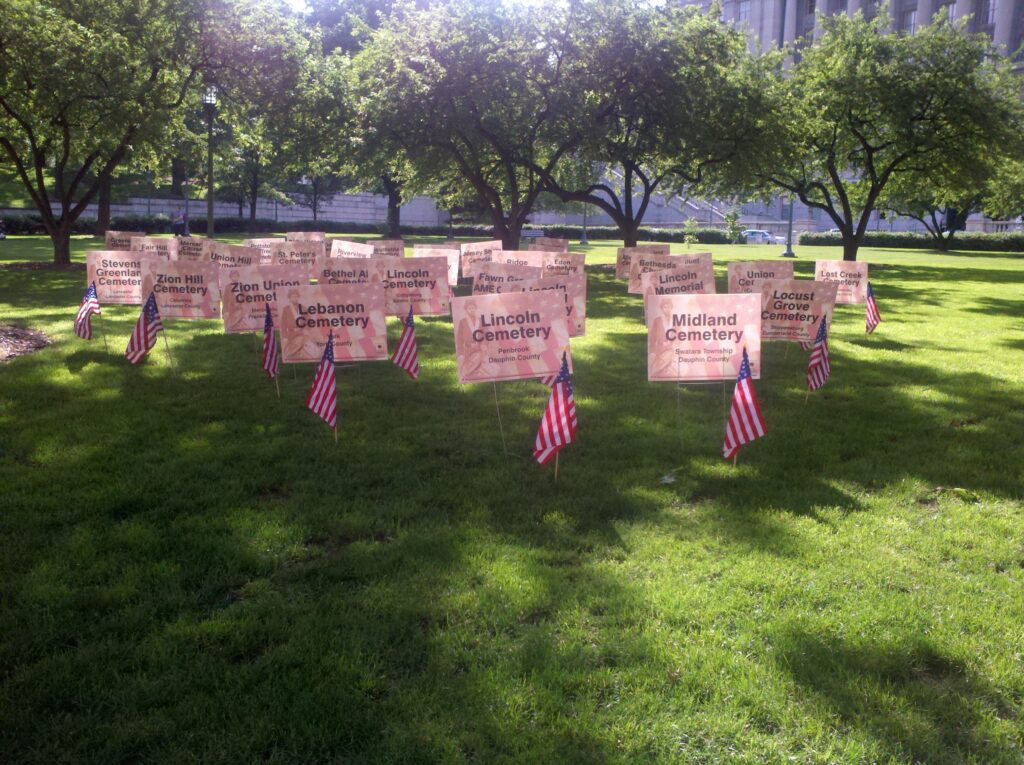The news, if you keep your eyes open, is full of stories about African American cemeteries – how they are abandoned, rediscovered, and in need of preservation. Behind each of these individual stories is a complex hidden landscape created by enslavement, segregation, exclusion, and economic hardship. It is also a geography that reveals patterns of migration, forgotten settlement, and demographic shifts as well as the strength and resilience of African American communities.
A closer look tells stories of the ancestors, including whole families, community leaders, and of patriots who served our nation. For example, in Pennsylvania, located right above the Mason-Dixon line, research has identified 113 African American cemeteries many containing burial sites of United States Colored Troops (USCT). Today, many of these cemeteries are in poor condition, located in areas without any descendant population or where the caretakers are growing older and have limited resources. While some of the cemeteries are forgotten or abandoned, others are being cared for by dedicated volunteers who have patched together a support system.

African American cemeteries are of particular historic significance. In many cases, they serve as the most tangible remnant of once thriving communities, holding the stories of the people who once lived in these landscapes. While associated houses, churches, and social halls may have been lost, the stones in the ground often remain as a marker. But are these sites appropriately valued? Walter Hood, in his introduction to the book Black Landscapes Matter (2020), posited that these landscapes tell the truth of the struggles and the victories of African Americans in North America and that the erasure of cemeteries is a way of forgetting a difficult past. However, he finds hope in the writings landscape studies scholar J.B. Jackson on the necessity of a period of abandonment stating “… ruins provide the incentive for restoration and for a return too origins.”
Recently, there have been renewed efforts to survey and map this larger landscape. A number of states and universities have taken up the challenge of identifying these sites by joining with caretakers and community groups. One proposed effort on the national level is the introduction of the African American Burial Grounds Preservation Act, that would establish a program at the National Park Service to provide grant opportunities and technical assistance to local partners to research, identify, survey and preserve these historic sites. It was most recently introduced in the 117th Congress as S.3667 and H.R. 6805.
As for gaining historic recognition for such cemeteries, there is renewed discussion in the National Park Service to modify Bulletin 15 that currently states that “ordinarily cemeteries” do not meet the criteria for listing in the National Register of Historic Places unless they meet additional requirements. Historic preservation organizations, notably the National Trust for Historic Preservation, also have launched targeted programs, for example the Trust’s African American Cultural Heritage Action Fund.
Hood would see all of these efforts as a sign of hope for the future. After what has been a long period of neglect of these sites and stories; the country is now turning toward a time of renewal and a time to build more resilient African American landscapes. The news across the country seems to illustrate that this revival is now underway.



One Response
Brenda, so enjoyed this issue and its clear discussions about AA cemeteries and churches and the many complexities of their preservation.